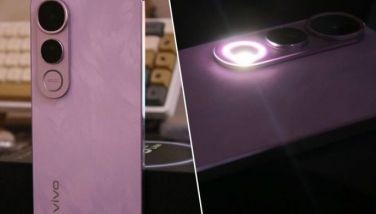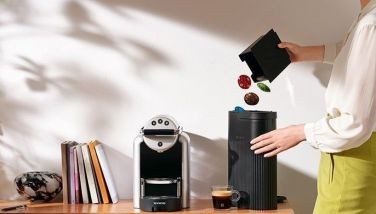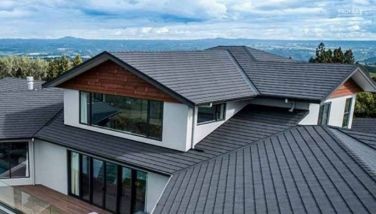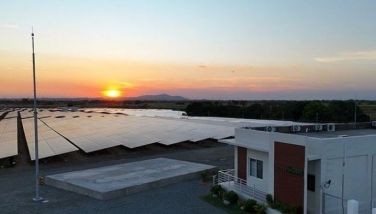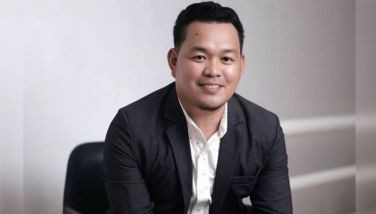Capturing Jun de Leon
 Like a Camera Lucida, celebrated photographer Jun de Leon visualized the life he wanted and traced it, one photo shoot at a time, into reality. “This is how I planned my life,” says the salt-and-pepper-haired photographer as he surveys the large windows of his high-ceiling, white-walled
Like a Camera Lucida, celebrated photographer Jun de Leon visualized the life he wanted and traced it, one photo shoot at a time, into reality. “This is how I planned my life,” says the salt-and-pepper-haired photographer as he surveys the large windows of his high-ceiling, white-walled
His present ideal life can be summed up in a simple equation of time. “I live in the area, and it takes me two minutes to get to my studio,” he explains, grinning, still evidently thrilled by the idea. “In the morning, I’m excited to get to work, and at the end of the day, I go home happy. Every day, I’m two minutes away from excitement, and two minutes away from happiness.” Clearly, this is a rare specimen: a man bright-eyed-in-love with his job.
I had never met the photographer before but his name has always been a buzzword, like a brand with similarly strong brand-like associations in the celebrity world — Kris Aquino, for instance, reportedly signs up for advertising shoots on the condition that Jun de Leon takes the images.
In the local art and style lexicon, his name is synonymous with striking celebrity portraits and compelling photography books traversing a wide and varied spectrum. A few highlights: he got Joyce Jimenez to go au naturel for the vigorously collected volume called Private Joyce, back when the diminutive actress was at the peak of her career. For a book project entitled Behind the Tears, part of a campaign drive for eye donors, he got the cream of local showbiz to get emotional in front of his camera. And at potential risk of finding himself on the receiving end of the Pambansang Kamao, he got world boxing champion Manny Pacquiao to submit himself to a few styling alterations and sit for portraits, to very happy results.
In De
These days, the lucrative advertising world keeps him busy, and thankfully, he doesn’t appear to suffer from the proverbial art-versus-work struggle that so often cripples artists.
“For me, happiness is shooting,” he declares, pacing the length of the studio as if to shake off the residual high of a photo shoot that ended just a few minutes before. Dressed in a white shirt, a pair of well-worn jeans and sneakers, he exudes an easygoing air despite his sure, if not forceful, declarations. “If I like it, I’ll do it. And I like to work. I just found out from my assistant that last year was a record year — 241 shoots. That means I was happy 241 days out 365!”
Quite succinct for a man who’s most comfortable expressing himself without words, and who has quite refreshingly mistaken his own candor for lack of politeness; on any given day, he would rather work out his vision by crafting stirring images that challenge both himself and the viewer. Case in point: on one wall of the studio hangs a large photograph of a sinewy woman in a backward leap, horizontally sailing through the air over foamy waves, muscles rippling across her arms and legs, her heavenward face serene as in a dream. The making of the photograph, as De
And in Jun de Leon’s mind, nothing is impossible: he is a photographer defined by one horizon to be pursued after another. “I’m not impressed with my work,” he says emphatically. “My work doesn’t overwhelm me. So I need to keep pushing myself. If something scares me, I’ll be excited to do it.”
“I just do things for photography,” he says. “I don’t dive, but recently I had to do an underwater shoot in a pool. So I did it. I weighed myself down with barbells. I’m try-sexual, I have to try everything.” Double entendre? If photographers are, indeed, the new rock stars, then De
Photography = Life
Midway through the interview, it becomes apparent that De Leon has what seems to be an aversion to sitting down; he is constantly flying off his seat in search for something to reinforce his point — books by photography heroes Helmut Newton and Richard Avedon, an old photograph that, remarkably enough, survived his strict six-months-shelf-life archiving system. His restlessness, however, appears to reflect his own attitude about life and photography, although he makes little to no distinction between the two.
De
And because he goes all out or not at all, his shift from analog cameras to digital was thorough and complete. In his studio he has top-of-the-line equipment, everything to make an enthusiast salivate, the centerpiece of which is an industrial-type tripod that holds two Mamiya cameras, each outfitted with Phase I Digital Camera Backs for high-quality images. “It’s not a sin to have the best equipment,” he says, “as long as you know what you’re doing.” Also in the studio are a Nikon D2X and a total of eight different kinds of lenses. If this says anything about De
The rest of De
By definition, De
The digital wave has given rise to a slew of new photographers armed to the teeth with an entire range of hardware that could put the Transformers to shame. But for De
He makes few other declarations on photography, and only one about his personal goals as a photographer. After much thought, and much restless milling about, he stops halfway to the toilet to say, “I want to create images that are more important than me, that’s all.”
Despite repeatedly claiming, “I’m very inarticulate,” an afternoon with Jun de Leon proves he has all the words he needs. With a fearless penchant for resolute and sweeping statements, he once told his wife, the former beauty queen Abbygale Arenas, “Photography is my first love.” And just how much does he love it? “More than food,” he says, bolting from his seat once again to browse his bookshelf for another title. “I love photography more than food.”









